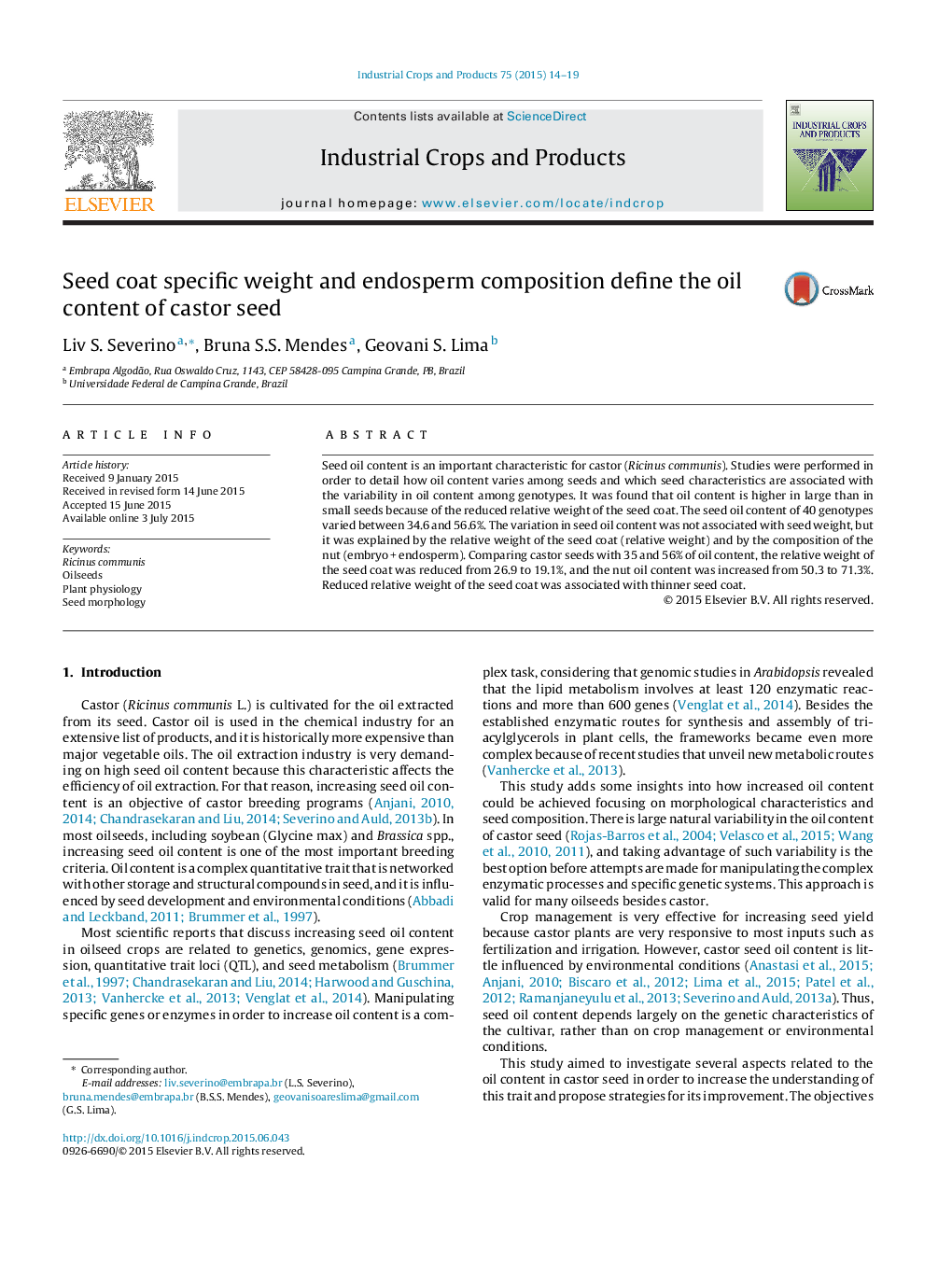| Article ID | Journal | Published Year | Pages | File Type |
|---|---|---|---|---|
| 4512820 | Industrial Crops and Products | 2015 | 6 Pages |
•High seed oil content is an important characteristic in castor cultivars.•Oil content was explained by the seed coat thickness and the endosperm oil content.•Seed oil content was not associated with seed weight variation among genotypes.•Large variability in the seed coat thickness was found among genotypes.
Seed oil content is an important characteristic for castor (Ricinus communis). Studies were performed in order to detail how oil content varies among seeds and which seed characteristics are associated with the variability in oil content among genotypes. It was found that oil content is higher in large than in small seeds because of the reduced relative weight of the seed coat. The seed oil content of 40 genotypes varied between 34.6 and 56.6%. The variation in seed oil content was not associated with seed weight, but it was explained by the relative weight of the seed coat (relative weight) and by the composition of the nut (embryo + endosperm). Comparing castor seeds with 35 and 56% of oil content, the relative weight of the seed coat was reduced from 26.9 to 19.1%, and the nut oil content was increased from 50.3 to 71.3%. Reduced relative weight of the seed coat was associated with thinner seed coat.
